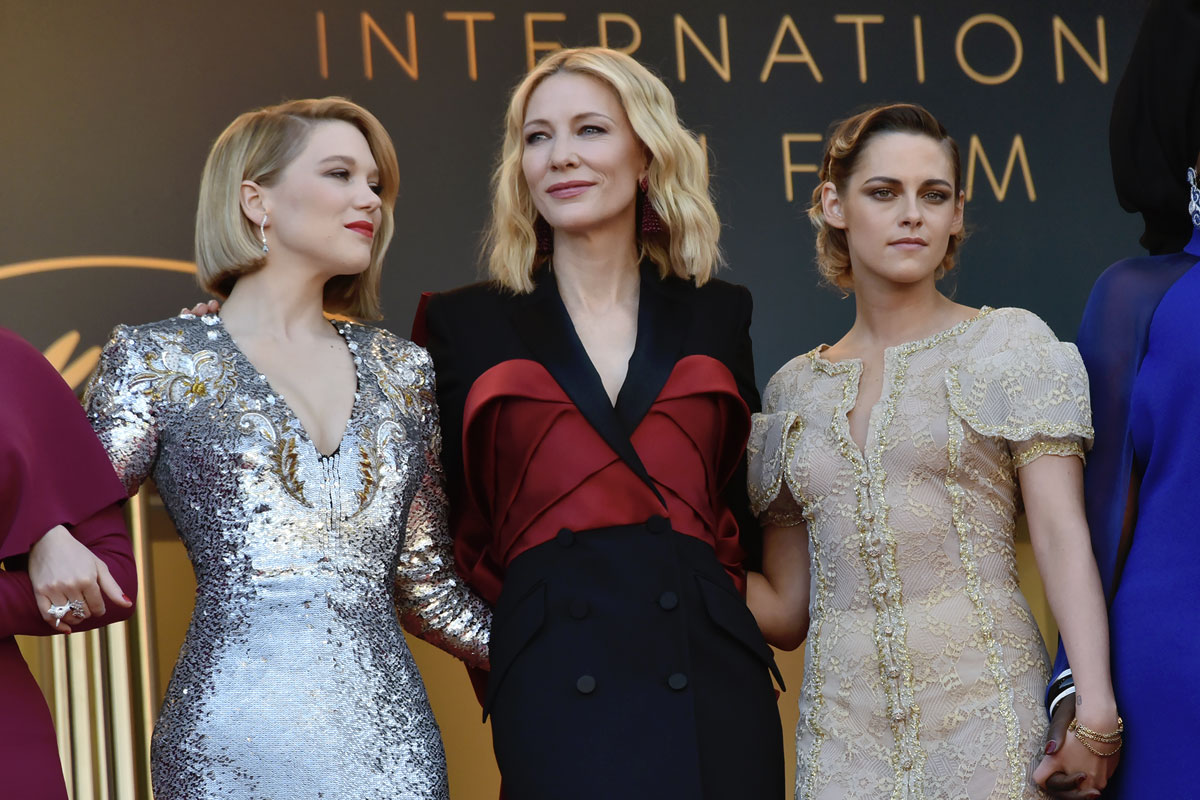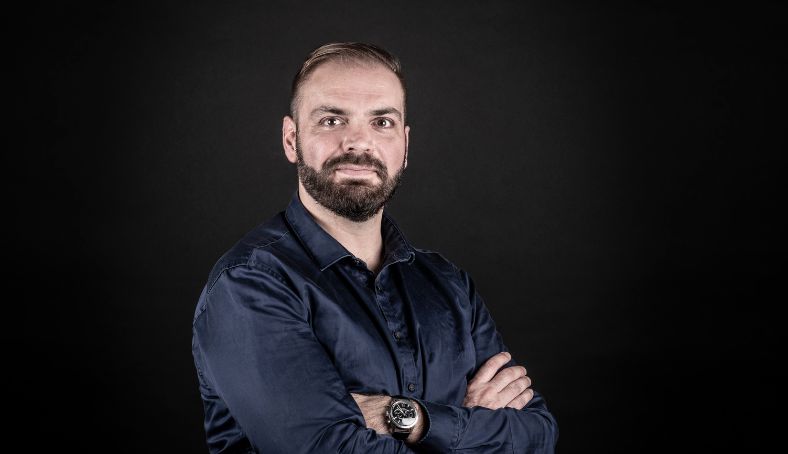
If from the steps of the Cannes Film Festival to the dark rooms, the directors are more and more numerous to be talked about, the world of cinema is still slow to feminize.
At the end of seven years of mandate, Pierre Lescure will give up his seat at the beginning of July to the German Iris Knobloch, who will become the first woman to preside over the Cannes Film Festival. An appointment which adds to that of Ava Cahen recently as head of Critics' Week. The feminization of cinema is one of the great challenges they will have to face. We take stock of the ongoing projects, the obstacles that persist and the hopes to be realized.
Towards more parity
« Less visible, less rewarded, less paid ". It is on this triple observation that the new series begins The Cheeky broadcast on France TV just before Cannes and now available online. This four-part documentary takes the time to explore the place of women from the beginnings of cinema to the present day. Four years after the “Weinstein” affair, cinema would therefore retain its reputation as an eminently “gendered” art.
The latest inventory from the CNC (National Center for Cinema and the Moving Image) shows that 25% of French films have been directed (or co-directed) by women, after a six-point increase between 2010 and 2019. Shy catch-up for this art in perpetual quest for the avant-garde, but where conservatism dominates. In 2022, the professions of small hands, from scripting to costume and make-up, are mainly female. As for the position of mixer, the last link in the film production line, it is traditionally entrusted to a man. On the production side: with equal skills, the average budget for a feature film by a filmmaker is almost half that of a filmmaker. Past a certain number of millions of euros there are only directors, we summarize in the middle.
France has however implemented various initiatives to accelerate the feminization of the sector. Since 2018: parity of the presidencies and members of the CNC commissions, creation of an observatory, obligation of gender statistics, obligation of training to fight against sexual harassment... Under the impetus of the Collectif 50/50, which campaigns for parity and diversity, the Center has also distributed grants for films whose teams are equal. Last year, this bonus (+15% of the support fund) benefited 32% of films (including Titanium and the Event), compared to a small quarter in 2019.
For film researcher Brigitte Rollet, a specialist in gender issues, if we want cinema to one day stop being " this art of making pretty women do pretty things “, according to the formula attributed (wrongly) to François Truffaut, the measures must continue and multiply. And to list: allocation of bonuses to films that do not systematically put girls in situations of hypersexualization, support for distributors highlighting films that derogate from the implicit rules of representations of the feminine and the masculine. It would also include in the programs of film schools a percentage of films made by women, as well as female directors in the programs of the Cinémathèque ". French cinema would also suffer from a certain French exception, continues the observer. " In addition to the weight of socio-cultural habits, we are the only country to carry the principle of republican universalism according to which all citizens are equal, and this tradition here proves to be an obstacle. The other countries that do not have this universalist tradition approach the question of feminization in a more direct way. In Germany, for example, the Berlinale has been providing gender statistics since 2004 ».
Festivals at the forefront?
2021 remains the year of the coronation of female directors at festivals. First with Chloé Zhao in Hollywood: her film nomadland won the Oscar for Best Picture in April. Since the creation of the ceremony in 1929, only one woman had won the statuette: Kathryn Bigelow in 2010. In July, Julia Ducournau in turn won the Palme d'Or at Cannes for Titanium. She becomes the second filmmaker to win the prize, 28 years after Jane Campion. Finally, in Venice, Audrey Diwan won the Golden Lion for L'Événement. A strong symbol for defenders of parity.
Not enough, say most observers pointing to the usual low representation of women in the official selections of Cannes, the Festival's weak link. This year they were five (out of 21 films) to participate in the competition against four last year, which still marks a record. The proportion improves in the parallel sections: five films directed by women out of 11 feature films selected at Critics' Week and 11 female directors out of a total of 23 films at the Directors' Fortnight. At the arrival ? The 2022 jury has little reason to be ashamed of its choices, rewarding, in the official selection, the directors Claire Denis (Ex-aequo Grand Prize for Stars at noon), Riley Keough and Gina Gamelle (War Pony ) and Charlotte Vandermeersch (who co-directs The Eight Mountains with her husband). While the French Touch award also stands out by winning the Scottish Charlotte Well (Aftersun).
It must be said that the largest film festival in the world has positioned itself as the privileged observatory of the status of women since the famous climb of the steps in 2018, a tribute to the 82 women selected since the first edition in 1946 (compared to 1 men ). Led by Cate Blanchett as the flamboyant president of the jury accompanied by Agnès Varda, the movement had called on festivals around the world to sign a charter of parity and equal pay. The event marked the spirits. Since then, around 688 festivals have signed up. Among the major events to keep promise, the Berlinale shows the way. Its last edition, in February, proclaimed five women winners, out of nine of the competition's prizes, including the Spaniard Carla Simon and again Claire Denis. A feminization which is also reflected on the screens with a significant number of films in the selection carried by heroines, from Juliette Binoche in With love and acharement to The Novelist by Hong Sang-soo, an account of a writer's wanderings in Seoul.
The figureheads
Overturn imaginaries and representations. The battle for feminization obviously also involves the content of films. Testifying in the documentary series The Cheeky, the director of Between the Waves Anaïs Volpé embodies this generation that upholds the values of sorority and shakes up conventions and looks. Without forgetting the eldest, Céline Sciamma, Valérie Donzelli, Mia Hansen-Love, Rebecca Zlotowski, already engulfed in a breach opened by Claire Denis, Noémie Lvovsky at the time... In France, there is no shortage of female fighters.
For researcher Brigitte Rollet, the challenge of the coming years is not so much to bring out new talent as to write women filmmakers into cinematographic history. "IIt is very rare to find narrative or formal terrains that have not yet been explored. In Cannes in the 80s and 90s, there were already directors who moved the lines like Claire Devers or Pascale Ferran, each Camera d'or for their first film. However, these directors have almost disappeared or do little filmmaking. The permanent quest for new profiles in which the media locks us up prevents us from thinking in a more global way and deprives us, in the name of fashion, from appreciating other imaginaries and other looks. ».
Sign of the times: if only one example of a catalyst is to be cited, among recent releases, it would be Ten percent. According to Brigitte Rollet, the series with more than four million viewers (in season 1) plays the role of a UFO in the French audiovisual landscape. " Firstly because the series was carried by three very different major players, namely Canal+, France TV and Netflix. Then because the unrepentant lesbian character portrayed by Camille Cottin sends strong indications of the possibilities of change. The researcher recalls that it is extremely rare in France to find, at prime time on public television, a series with a lesbian who escapes the usual tropes of LGBT characters and who, on the contrary, is not reduced to her sexuality that she lives in a totally open and free way. " When you know how the media work, you can easily imagine that the success of the series (written by a woman by the way) and the popularity of the character of Andréa will encourage other less standardized fictions. ».
Similar items
- All
- Visual arts & Art de vivre
- Film & Audiovisual
- Edition
- Video games
- Fashion & Design
- Music & Performing Arts



